The National Rail Timetable (NRT) at last shows considerable signs of improvement, with the latest version being far more accurate than recent ones. What lets it down is its introduction and presentation, because clearly it was intended to be rather different and then changed course. Let me explain.
I was told that, in order to aid accuracy, a lot of detail would be removed from this edition. That included all bus and ferry tables (which come from third parties and were rarely correct anyway), all details of catering, references to First Class, reservation symbols, station minimum connection times, and symbols in station banks that showed if a station has a ferry, metro, tram or underground interchange.
In addition, I was told mileages would be removed. I took this up with the Office of Rail and Road (ORR), which agreed with me that this was a requirement, because the Routeing Guide defines distances as “those shown in NRT tables”.
In the event, however, little has changed in this NRT, except for the removal of virtually all bus and ferry tables (only 123A remains, as will be detailed on page 63).
Where the presentation is poor is that on downloading the full NRT I found that the ‘References & Symbols’ file had had everything removed to match what had been intended, so you’ll find no explanation of the various catering symbols, and so on. All that remains are symbols for days of the week and ‘u’ and ‘s’ for ‘pick up’ or ‘set down’ only, plus ‘x’ for request stops. Those readers who buy the full version from Middleton Press need have no fear, because I suggested to them that they remove the new page and replace it with that from the May 2016 edition, which showed all the symbols. Easy? Yes, so why didn’t the NRT team do the same thing at the last minute?
The next thing I spotted was that the sleeper tables file, T400-404, was still that from last May. I emailed the NRT team who told me the new one was being worked on and the May file was duly removed.
A week or so later I emailed again to ask when it would appear, only to be told ‘we’re not doing one any longer’. They then added that they hadn’t done one in May either!
I reminded them that May’s existed and I still had it - and as for not doing one any longer they should look at the foot of table 65 where every page has the note: ‘For sleeper trains, operated by Serco Caledonian Sleepers, refer to Tables T400-T404’!
In reply, they said they would remove all those notes. The trouble is Middleton Press wanted to go to print and certainly couldn’t wait for revised pages, so again I suggested to them that they lifted the sleeper table from their ‘Abbreviated’ (ex-Thomas Cook) version (which came out before Christmas and appears there as table 161), rename it T400 and insert it at the end of the full NRT.
At least users of the full printed version will not therefore be led astray by these basic errors of presentation.
Next, the issue of the NRT maps. Middleton Press has its own and does not use these, as they haven’t been updated for some time - and it’s just as well because they show all the bus and ferry tables that have been withdrawn.
I asked the NRT team what they would do about these and was told: ‘We are currently reviewing the use and content of Map Diagrams.’ So I assume these too will be withdrawn in due course.
The Index has been greatly simplified and seems accurate, but now consists only of a list of stations with the table numbers alongside each. Gone are all the sub-divisions or details of cycle storage, car parks, taxi ranks and so on.
In most cases it makes for easy usage, but it is unhelpful to be told Clapham Junction appears in 25 tables, without any way of knowing which one you want. This will be even more pertinent if maps are withdrawn altogether.
The Commercial Pages have also been withdrawn, so there is no longer any detail on how to use the timetable, how to contact operators, how to cross London or walking times between groups of stations. Some of this was not only useful but fairly static – that is, it wouldn’t have taken up much time for the team to update each edition.
Finally, there is no longer any reference to Transport Focus or London TravelWatch. This file had always appeared in NRTs over the years under the heading ‘Passenger Representation’.
One thing that is not needed, though, is the line at the foot of every page that says: ‘Please refer to separate Notes Section for all Table Notes that are specific to a particular NRT edition.’ It means little to me. There is a ‘Table Notes’ file but it says virtually nothing specific other than a few operating dates for the North Yorkshire Moors Railway!
I do, however, like the fact that tables are all now three-digit, all contain ‘T’ for table and have ‘F’ added for the outward pages.
So table 26 used to appear as Table 26 northbound and Table 26R southbound, but now appears at Table T026-F and Table T026-R. It’s interesting to ponder why the ‘F’ is needed! Certainly when I was working with the team under its last editor, she said the ‘R’ was being added to show ‘Reverse’ as a lot of people had asked for some reference in long tables to ascertain immediately whether the other direction was earlier or later.
To seasoned users that wasn’t needed in ex-London tables where ‘Down’ comes before ‘Up’, but it helps in others. So does ‘F’ mean ‘Forward’? I don’t know and it doesn’t matter much, because at least it’s consistent.
So all-in-all it’s a far better edition and all it needs is time spent on the ‘front end’ presentation. However, will this all be spoiled by an implementation of the original policy of removing so much useful information? I suggest this version shows it isn’t necessary to do that, so let’s hope it remains as it is now.
General
In what follows, unless stated, times are for Monday to Friday, and I am comparing the new NRT with the May 2016 edition.
I use the following abbreviations: First TransPennine Express (TPE); Great Western Railway (GWR); High Speed Train (HST); South West Trains (SWT).
Table 1
I gather table 1 has the new c2c timetable, which took effect from January 9. However, it is not dated so anybody using it before then would have known. The reason for the delay was that not all the new trains needed to run the service were available until then. I am told c2c made this clear to users some months ago, so the NRT should have shown the start date.
The changes relate to peak trains, with a redistribution of intermediate calls. More trains omit Barking and some longer non-stop runs have been introduced such as West Ham to Benfleet and West Ham to Chalkwell.
Tables 26, 39 & 48
Once again catering remains incorrect on Virgin Trains East Coast services. They all offer hot food in First Class and so simply require the ‘knife & fork in a box’ symbol, but all are shown as having only a trolley.
The only trains showing the correct offering are Hull Trains, giving the impression they alone offer hot food.
What is pertinent is that Virgin Trains West Coast on table 65 show the correct symbols, so why is East Coast not bothering?
There are several new services on the East Coast Main Line. A later service from King’s Cross to York leaves 2257, arriving 0130 and, on Fridays only, there’s a new addition in the form of a 2201 Edinburgh-Newcastle (arr 2356).
On Saturdays many gaps were filled between King’s Cross and Leeds, taking the total number of trains from 19 to 23 northbound (20 to 24 southbound).
On Sundays an 0845 King’s Cross-Edinburgh and 1120 and 1447 return were new, together with some new Leeds services.
These have quite an effect on Alnmouth and Morpeth (table 48). What used to be a Cinderella service at Alnmouth has in recent years grown to be an excellent one, both for commuters and casual users. It is now almost hourly, all day, with even more added under the new timetable.
The 1830 Edinburgh-King’s Cross now calls at 1939, while a new Fridays-only service at 2201 from Edinburgh to Newcastle calls at 2310.
Northbound the 1330 and 1730 from King’s Cross call at 1710 and 2058 respectively. This means Alnmouth now has seven northbound (eight Fridays, six Sundays) and nine southbound services (five Sundays) to/from King’s Cross, the fastest of which averages 90mph, despite having four intermediate stops.
Commuting to Newcastle is also spectacular, with five arrivals by 0832 and five departures home between 1637 and 1844, with some averaging 91mph for the 35 miles.
Next, bear in mind the weekly season is a mere £51.50 (or £79 First Class). On a good day on Southern (do they exist?), a roughly the same distance Victoria-Haywards Heath averages 54mph and costs £106.20 for a Standard weekly! And isn’t Alnwick a more pleasant place to live too?
Similarly, Morpeth now has an improved service, with new calls at 1515 and 1956 in the 1400 and 1830 Edinburgh-King’s Cross respectively, and at 2327 in the 2201(FO) Edinburgh-Newcastle.
There are also calls at 1233 and 1732 on Sundays in the 1120 and 1620 Edinburgh-King’s Cross respectively.
Northbound the 0930 and 1330 King’s Cross-Edinburgh now call at 1256 and 1656 respectively, while on Sundays the 1037 York-Edinburgh calls at 1154. This now gives Morpeth a reasonable spread of services to/from King’s Cross, with the fastest averaging 92mph with three intermediate stops.
One oddity I have never spotted before is that northbound there is a Leeds departure line underneath York which allows all the TPE departures to the north to be shown. However, southbound, after York the Leeds line is also a departure line and shows nothing, as the ‘d’ rejects all the TPE arrivals! To see these you have to use table 39, which shows the enhanced service from Leeds to Newcastle provided by the extension of some TPE trains from York.
Table 28
There is some criticism of poor connections at Barton-on-Humber into the buses for Hull. An example is that the 0648 arrival connected with the 0653 bus, but while the bus still runs at that time the train now arrives 0652 – clearly not a proper connection.
Similarly, the 1949 train arrival connected with the 1953 bus, but the train now arrives 1952. The last train arrives 2157 and misses the 2153 last bus.
It’s so sad that true integration is still just a pipe dream in Britain, with operators merely paying lip service to it, and each mode blaming the other.
Table 41
A new service runs at 0728 from Halifax to Leeds. Although the timetable doesn’t say so, of course, this is operated by a Grand Central Class 180 ‘Adelante’ unit.
It fills a short gap between existing 0720 and 0734 departures from Halifax but has the advantage for local users of starting there, as well as offering a far higher standard of accommodation than the usual trains on the route. I’m told the 0720 and 0734 are only two-car formations!
Tables 42 & 94
This time the NRT has the correct timetable for the Settle & Carlisle line, including the bus connections – at least for the period while it remains blocked north of Armathwaite (probably until the end of March).
It also correctly shows the Sunday shuttles between Blackpool, Preston and Hellifield to connect with Settle & Carlisle trains.
As before, these latter services are shown in table 94, but only as Blackpool North to Clitheroe services, with nothing to say they extend to Hellifield.
Tables 51, 65 & 84
Northbound Bournemouth-Manchester Piccadilly services leave Stafford as before (generally XX28) but now arrive Stoke-on-Trent 10 minutes earlier than before (at XX43) and similarly at Macclesfield, Stockport and Manchester itself (arr XX26).
Reports say this is owing to a faster transit since the construction of the Norton Bridge flyover, but that must be understood in context. It is because the flyover avoids what was a pathing problem as the Manchester trains crossed the ‘Up’ main line.
The West Country trains to Manchester had no conflict before and so were already 10 mins faster than those from Bournemouth.
Table 58
On Sundays the 1203 Cheltenham Spa-Bristol Temple Meads now starts back from Worcester Shrub Hill at 1138, calling at Ashchurch (1153).
Table 61
St Alban’s Abbey has gained a later last service each way at 2221 from Watford Junction (2242 return) Mon-Sat, and 2304 from Watford, 2326 return on Sundays.
Table 62
The normal service between Barking and Gospel Oak resumes on February 13 and this is shown in table 62. However before then it is only showing buses from Gospel Oak to Harringay in that direction, with a note to say they extend to Seven Sisters.
In the other it shows buses only from Barking to Leyton Midland Road with a note to say they extend to Walthamstow Central! Clearly once again the NRT team has not seen the inconsistency or, if it did, not checked to see what the true picture is.
Table 67
One significant change is that London Midland’s peak evening service out of Euston to Crewe via Stoke-on-Trent is now at more regular intervals.
Previously after the 1746 fast (that is, avoiding Northampton), the 1849 went via Northampton, then the next was 2013, which went via Northampton but avoided Stafford (Colwich Junction to Stoke direct). A 2049 then ran via Northampton and Birmingham to Crewe, omitting Stoke.
Departures are now 1746 fast, 1849 via Northampton, 1946 fast, 2046 fast and avoiding Stafford, then, three minutes later, the 2049 via Northampton and Birmingham, omitting Stoke.
Table 78A
This table shows only the 0922 (FO) Stockport to Stalybridge – or it should do! It also adds in two ‘new’ Mon-Fri East Midlands trains, non-stop between Stockport and Stockport (sic), departing Stockport 0954 and 1054 and each taking four hours and 31 minutes!
What has it picked up? Yes, there are EMT departures and arrivals at these times (to/from Norwich) but even if a portion is detached somewhere and returns, it’s hard to see where that would result in a four-and-a-half hour round trip! Any ideas?
Tables 82 & 97
A press release from Network Rail on November 29 stated that the lines from Preston to Blackpool North would be closed every weekend for ten weeks from January 21.
Northern’s website advises that bus replacements will be used every weekend from January 21 to April 2 inclusive – which is 11 weeks. I gather the latter dates are correct. However, there is not a mention of this in either table 82 or 97, which shows the full train service throughout.
Table 98
The 1619 Morecambe to Leeds via the Bare Lane curve (that is, avoiding Lancaster) has been omitted, as has the 1446 on Sundays. They do still run.
The only other train to take the route is the 0559 to Windermere on Mon-Fri. There are no southbound workings.
Tables 106 & 107
These tables show the normal Merseyrail train service between Liverpool and the Wirral. How can the NRT team get it so wrong?
The Wirral loop under the Mersey is closed as follows throughout the period of the winter timetable and into the summer.
From January 3 to February 12 all Wirral trains will terminate at either Birkenhead North or Birkenhead Central with no trains at all to Liverpool.
From February 13 to May 29 weekend trains terminate Birkenhead as for the first blockade, above, but on Mon-Fri they use the tunnel and terminate at James Street. The exception will be for Bank Holiday weekends and for the Grand National horse race at Aintree in early April.
From May 30 to June 18 in the summer timetable all trains will again terminate at either Birkenhead North or Birkenhead Central. The whole route reopens on June 19.
It is surely not acceptable that I can find these dates well in advance, yet the NRT team apparently knows nothing whatsoever about the closure.
Table 115
The 1057 South Ruislip-Paddington and 1136 Paddington-West Ruislip – the only two services to use the route to Paddington – are now shown correctly in this table.
The most significant change was the extension of services to Oxford. The average time from Paddington is 56 mins, whereas from Marylebone it is 63 mins. There are 35 non-overtaken trains a day from Paddington (Mon-Fri) and 35 from Marylebone.
Chiltern has no walk-on fares of its own and the GWR fares (which are ‘any permitted route’) will apply. All season tickets are also now valid on either route.
So overall there is an improvement in choice but little difference between them, and the choice of route to London will depend on whether Paddington is more convenient than Marylebone.
When it comes to rolling stock the same applies: GWR services are sometimes HSTs but often Class 165! Chiltern’s vary from the occasional Mk 3-hauled set down to its Class 165s – though I confess Chiltern’s 165s are superior to GWR’s and its Class 168 units are excellent.
Of course the differences lie in the intermediate markets like Oxford-Reading or Slough, as opposed to Oxford-High Wycombe, plus the huge attraction of Oxford Parkway on the Chiltern route.
Table 117
The Thames Valley route underwent major changes with the introduction of the half-hourly electric service between Paddington and Hayes & Harlington from January 2.
Ignoring all fast services and Heathrow Express the number of off-peak suburban departures each hour from Paddington remains two ‘Heathrow Connect’ plus four local services to Reading, but the two to Greenford are now two to Hayes & Harlington instead, with the Greenford service now a shuttle from West Ealing’s new bay platform.
The Hayes services took over Acton Main Line from the Greenford services and omit Hanwell, but they do call at Southall, which means Southall increased its off-peak frequency from four to six per hour and Hayes itself from six to eight. However, a number of peak trains have ceased calling at Southall.
Tables 120 & 121
Despite it having been said that the through Paddington trains to/from Bourne End and Henley-on-Thames would be withdrawn, this has not been the case – though the NRT is silent about all of them. They only run Mon-Fri.
The 0828 from Bourne End to Maidenhead extends to Paddington (arr 0920) and the 1712 from Maidenhead to Bourne End commences Paddington 1642 (table 120).
On table 121 the 0708 and 0742 from Henley run to Paddington (arr 0755 and 0827) while the 1758, 1859 and 1938 from Twyford to Henley commence Paddington 1712, 1812 and 1905 respectively.
One minor change is that the 0549, 0631 and 0709 from Maidenhead to Bourne End now call at Cookham.
Tables 123, 123A, 132 & 134
Two new weekend late services now run from Cardiff Central to Bristol Temple Meads at 2247 on Saturdays and 2307 on Sundays. I confess I do understand why these appear only in table 132 and not table 134 as well.
The 0912 Westbury-Weymouth (Sundays only) now starts back at Bristol Temple Meads at 0823 (table 123). Table 123A is the only remaining bus table in the NRT, though it also shows (correctly) the trains between Yeovil Pen Mill and Yeovil Junction. It doesn’t get the buses quite right – but then even GWR’s own timetable has errors for this service: only SWT’s timetable book has them correct!
The first bus from the Bus Station to Yeovil Junction is 0700 (omitted) and there is also a 1730 (omitted). The 1733 from Yeovil Pen Mill to the Bus Station does not run, but there is a 1902 which is omitted.
Table 126
It can’t be seen from the table, of course, but it is worth noting that the 1120 Paddington-Great Malvern and 1425 return are now operated by an HST instead of a Class 180 ‘Adelante’.
Table 135
Unfortunately, the Pullman dining facilities offered on the 0553 Plymouth-Paddington and 1006 return to Penzance (‘Cornish Riviera’) have been withdrawn. I am told they did not develop in either direction, although the other Pullman restaurant trains are all doing well.
These remain the 0655, 1201, 1256 and 1803 Plymouth-Paddington and 1205, 1305, 1803 and 1903 return, plus the 0558 Swansea-Paddington and 1045 return.
A footnote for the 1006 in the NRT still says ‘Restaurant for customers joining to Reading’, but these things slip through.
The 1106 Paddington-Plymouth now calls at Pewsey and, in a very surprising move on a very busy West Country service, the 1803 Paddington-Penzance ‘Golden Hind’ now calls at Newbury at 1848.
The 2207 Exmouth-Paignton arrives Newton Abbot 2321 but is then held there until 2334 to await the arrival of the 2035 Paddington-Plymouth (at 2328) to offer a better last connection for Torquay and Paignton.
It has to be said that connections for Paignton from Paddington are terrible in the evenings and must lead anyone who has a car to drive to Newton Abbot instead.
For example, the wait at Newton Abbot is 34 minutes out of the 1606 from Paddington, 31 minutes out of the 1703, the 1733 is a through train, then it’s 23 minutes out of the 1803 and 19 minutes out of the 1903.
At least the new connection out of the 2035 is only six minutes, as well as being later than before.
Table 158
The 0707 Poole-Waterloo on Saturdays now starts back from Weymouth at 0620. This isn’t the first train from Weymouth on a Saturday (that’s 0542 to Waterloo) but it does fill a gap.
Also on Saturdays are two new services mainly to benefit those travelling to Southampton Airport – probably the best-sited airport in the country for its train connections, as it is only around a five-minute walk from the train to the check-in desks. These are an 0540 Portsmouth Harbour-Southampton Central (0627 at the airport) and an 0510 Basingstoke to Southampton Central (airport arrival 0539). The first, of course, has to take the unusual route of going via, and reversing at, Eastleigh, to reach the airport. Sadly, the NRT only shows it as Portsmouth to Eastleigh, with no note to say it goes on to Southampton Central, and neither does the service have a note in the reverse pages to say it has come from Portsmouth.
Worse still is the lack of ‘associations’ in this table on Sundays, where the XX54 Waterloo to Poole and Portsmouth Harbour departures divide at Eastleigh. A few are correctly shown but most appear to require a change.
It’s worse in the ‘Up’ direction as it appears to show the Poole service terminating Eastleigh and in the column after the Portsmouth-Waterloo portion. It takes a careful examination to note they connect, let alone know they attach.
Table 160
The main changes here related to the services that run via Bruton and also those that link Yeovil Pen Mill with Junction, and as these are rather awkward to understand it is easier if I say what runs now, rather than what changed.
These are the trains that serve Yeovil Pen Mill (YPM): 0541 YPM-Waterloo via Sherborne; 1250 Waterloo-YPM via Bruton, which then, after a five-minute wait, becomes the 1544 YPM-Waterloo via Sherborne; 1350 Waterloo-YPM via Sherborne; 1631 YPM-Yeovil Junction; 1646 Yeovil Junction-Waterloo via Bruton; 1650 Waterloo-YPM via Sherborne, which continues to Salisbury via Bruton; 1750 Waterloo-YPM via Sherborne; 2030 YPM-Yeovil Junction; 1850 Waterloo-YPM via Sherborne, which continues to Salisbury via Bruton.
This gives the complete service from YPM to Yeovil Junction at 0541, 1544, 1631 and 2030. From Yeovil Junction to YPM trains are at 1620, 1646, 1917, 2020 and 2117. Note all the Saturday services are discontinued for the winter.
Unfortunately, table 160 omits the 2030 YPM-Yeovil Junction and also the return section of the 1850 from Waterloo at 2127 from YPM to Salisbury via Bruton – though it is shown just from Westbury as the 2218 to Salisbury. The 2127 YPM to Westbury is also omitted from table 123, by the way.
Sadly, the ‘associations’ are frequently omitted here – that’s where trains join or split yet are treated in the NRT as separate trains. I know that, as with the same problem in table 158, above, SWT pointed out these errors to the NRT team at proof stage, yet it seems none was corrected.
These affect all Waterloo-Bristol Temple Meads services on Mon-Fri and Sundays, which are shown as separate services from/to Salisbury, yet they do manage to get them all correct on Saturdays.
Next, on Fridays only, the 2340 Waterloo-Salisbury now extends to Yeovil Junction, calling at all stations to set down only, and on Saturdays the 2020 Waterloo-Yeovil Junction is extended to Axminster.
On Sundays a new service runs at 1710 from Salisbury to Frome (1757), from where it returns at 1804 to Salisbury and then forms the 1852 to Waterloo.
Table 179
Sensibly, this table has been simplified. It used to show Luton-Wimbledon Chase-Sutton-Wimbledon Chase – quite unnecessarily. The last part of the ‘loop’ has now been deleted (it is always shown in the reverse pages of course) with the table finishing at Sutton.
The only other improvement would be if Network Rail would stop calling that station ‘Sutton (Surrey)’ when firstly Sutton is unique as a station name and secondly it’s not in Surrey but Greater London!
In that respect at least the NRT correctly shows ‘Ashford (Surrey)’ whereas SWT annoyingly announces it as ‘Ashford (Middlesex)’ despite Middlesex having been abolished 52 years ago.
However, in Britain the hardest to show used to be the two Hayes – for years shown as Middlesex and Kent, despite both being in London. One is now Hayes & Harlington so the other Hayes is now unique, though still annoyingly shown as ‘Kent’.
When some folks tell me they still think of places like Croydon as being in Surrey I always say: ‘Fine, then hand back your London Freedom Pass – you can’t have it both ways!’
Table 187
I made the point in May that all GWR services from Brighton to Bristol or Great Malvern had been omitted from this Brighton-Southampton table. They still are! This is quite wrong for a neutral document like the NRT.
Table 218
Turning to Scotland, the 0525 Ayr-Girvan has been omitted from this table.
Table 226
After a fuss was made locally, the previously long-standing ‘fast’ extra morning peak service from Helensburgh Central has been restored. However, while it omits quite a few stops, it’s now slower than all other services!
It leaves at 0805 and calls all stations to Dumbarton East, then just Partick, Charing Cross, Queen Street (0851), High Street and terminates Springburn at 0903.
Table 227
In a most curious move, the ‘Down’ sleeper is shown as the 0450 from Edinburgh to Fort William, but without sleeping cars. Alongside is another version just from Dalmuir to Fort William (with the same times) but this time showing the sleeping cars. However, the latter is shown as running ‘Tuesdays excepted’! But the really annoying thing is that the Glasgow Queen Street stop is again omitted as it was in May. It departs 0548 (from Low Level).
Similar errors occur Saturdays, and in the ‘Up’ direction the 1950 Fort William-Euston again omits both the sleeping cars and the Queen Street Low Level call (at 0014). Finally, on Sundays the errors are the same in the 1900 Fort William-Euston (it calls Queen Street 2329).
Tables 229 & 242
A new service (Mon-Sat) runs from Perth (0508) to Inverness (0749) calling all stations except Newtonmore.
The ‘Down’ sleeper from Euston only calls to set down sleeping-car passengers until it arrives at Kingussie when it becomes a ‘normal’ service to Inverness, dep 0719 and arriving 0838.
This arrangement was provided because otherwise the first normal day train into Inverness did not arrive until 1027. However, the arrangement still applies, despite the new early train from Perth. Incidentally it appears the new Perth service is standard class only, which is odd on the main line.
Southbound also saw a new early departure – and also seemingly standard class only – at 0536 from Inverness to Edinburgh (0921). This takes over the path of the previous 0712 Blair Atholl-Edinburgh. An almost four-hour journey on a suburban unit without a trolley service - and leaving 0536 too - does not sound at all attractive to me!
Finally, a new station has opened at Edinburgh Gateway (tables 229 & 242). Perth/Inverness and the slower Dundee services call, as do most Fife Circle trains. It is an interchange for Edinburgh Airport, which is three stops away by tram – just eight minutes.
Table 239
All the connecting times from/to Glasgow, Edinburgh and Aberdeen into and out of Far North services have been removed and the lines left blank.
These were added a few years ago when the NRT was trying to improve the information for such lengthy, but major, flows. Of course they were hand-edited in, but it was a relatively minor task and it is a great pity the effort is no longer being made.
Tables 400-404
As has been explained in my introduction, the NRT has abolished the Sleeper Tables but left in references to them, so although these won’t be found on line they do appear in the printed version, because the table from Middleton Press’s ‘Abbreviated’ ex-Thomas Cook version is shown, duly renamed T400.
https://www.grandcentralrail.com/

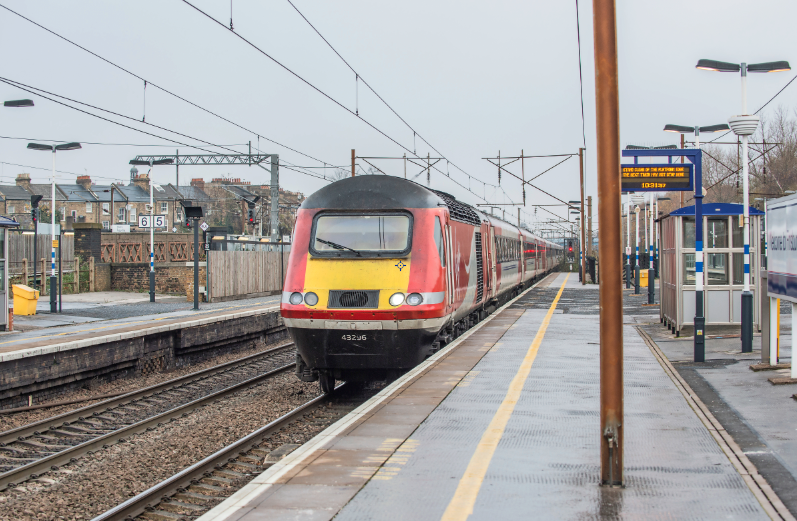
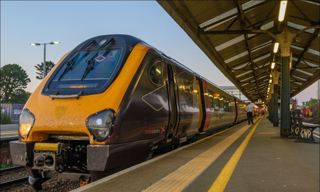
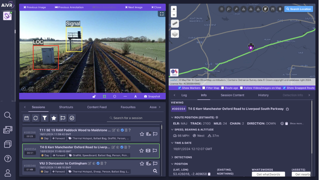
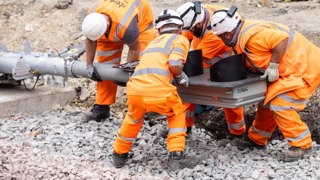
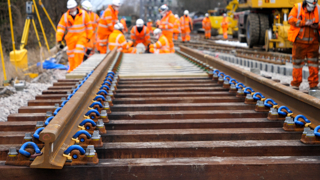










Login to comment
Comments
No comments have been made yet.